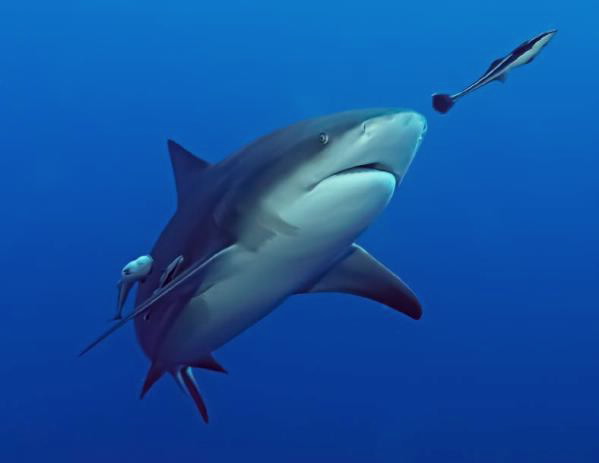They are apex predators with almost no equal, but recent studies of the age dynamics and growth ranges of Bull and Pig-eye sharks suggest they are being over-exploited.
 |
| Bull Shark also known as Carcharhinus Leucas |
In a first ever study of these sharks that are normally found in tropical waters, Australian scientists using nuclear science techniques found evidence they are not reaching full maturity, which could be a result of pressure from a rising global population and over-exploitation by commercial fisheries.
Appropriate management strategies for coastal regions require an understanding of how ecological similarities and differences among species shape ecosystem processes.
Here, we tested whether morphological similarity equated to similar age and growth patterns in two common coastal sharks in northern Australia. Vertebrae of 199 pig-eye (Carcharhinus amboinensis) and 94 bull (C. leucas) sharks were sourced principally from commercial fisheries operating along the Northern Territory coastline during 2007–2009. We sectioned vertebrae to provide estimates of age of these animals.
Model averaging results indicated female pig-eye sharks matured at 13 years and lived >30 years. Theoretical asymptotic length (L∞) (±s.e.) was estimated to be 2672 (±11.94) mm with a growth coefficient (k) of 0.145 year–1.
Male pig-eye sharks matured slightly earlier than females (12 years) and survived >26 years. Theoretical asymptotic length for males (L∞) (±s.e.) was also smaller (2540 ± 13.056) mm and they grew faster (k = 0.161 year–1) than females. Bull sharks matured at 9.5 years and reached a maximum theoretical size (L∞) (±s.e.) of 3119 mm (±9.803) with a similar growth coefficient (k = 0.158 year–1) to pig-eye sharks.
Longevity of bull sharks was estimated to be more than 27 years. Our results indicate that these patterns of high longevity and slow growth are indicative of low resilience and high susceptibility to over-exploitation of these coastal sharks.
To learn more about this research, read the full text.
Shark Facts | |
Pig-eye Shark | Bull Shark |
Scientific Name: Carcharhinus Amboinensis Found: In tropical and subtropical waters of the Indo-West Pacific Ocean, including: Northern Australia, Indonesia, Southern Africa and India. The sharks can also be seen in shallow inshore areas such as estuaries and rivers. Average life span: Male life span 26 years. For females it is 30 years Size: 1.9-2.5m [6.2–8.2 ft] Diet: Feeds on bottom fishes, crustaceans and molluscs. Did you know? The pig-eyed shark is often confused with the bull shark due to its short, blunt snout and black markings. To tell them apart the pigeye sharks’ first dorsal fin is four times the height of the second dorsal fin and has smaller eyes than the bull shark. | Scientific Name: Carcharhinus Leucas Found: In shallow, warm waters throughout the Atlantic, Indian and Pacific Oceans. They can also be found in rivers like the Amazon and Brisbane rivers; and also in estuaries and bays. Average life span: 16-26 years Size: 7 to 11ft in length and can weigh up to 200- 300 pounds [90-136kg) Diet: Feeds on fish but sometimes eats dolphins and sea turtles. Did you know? The Bull Shark can be recognised by a combination of characters including a stout body, short blunt snout, triangular teeth in the upper jaw and has no fin markings as an adult. |
Published: 05/07/2013


